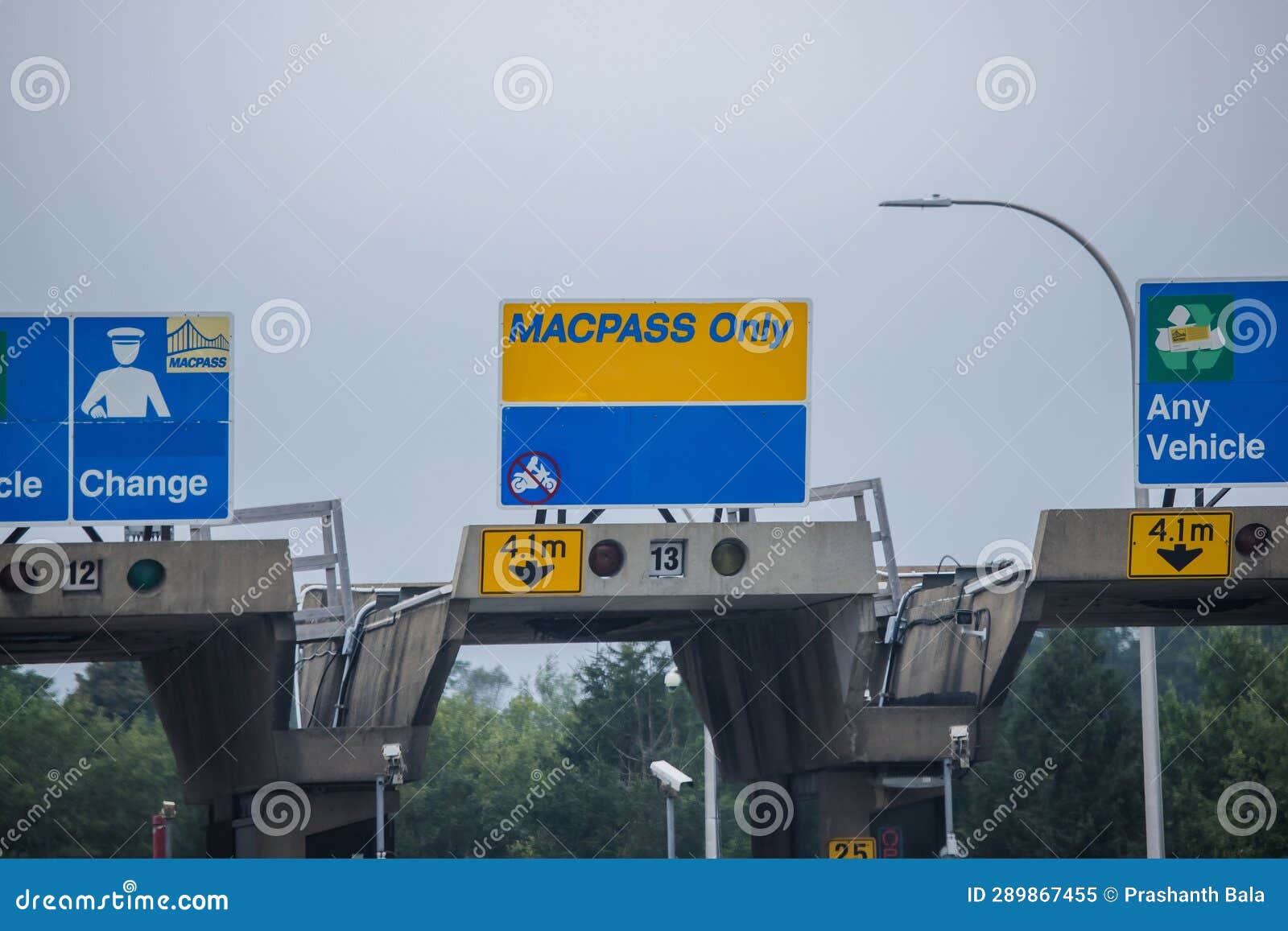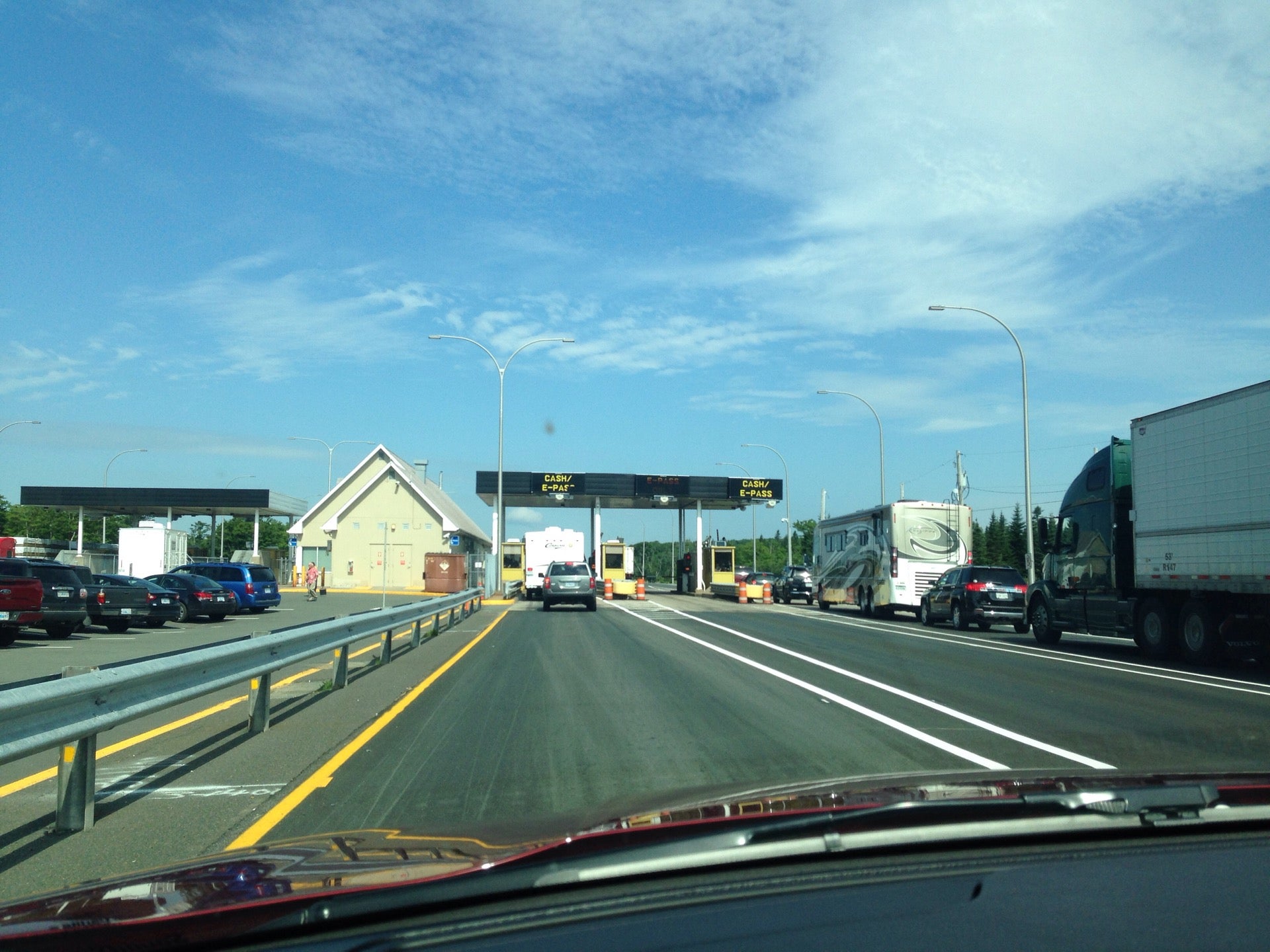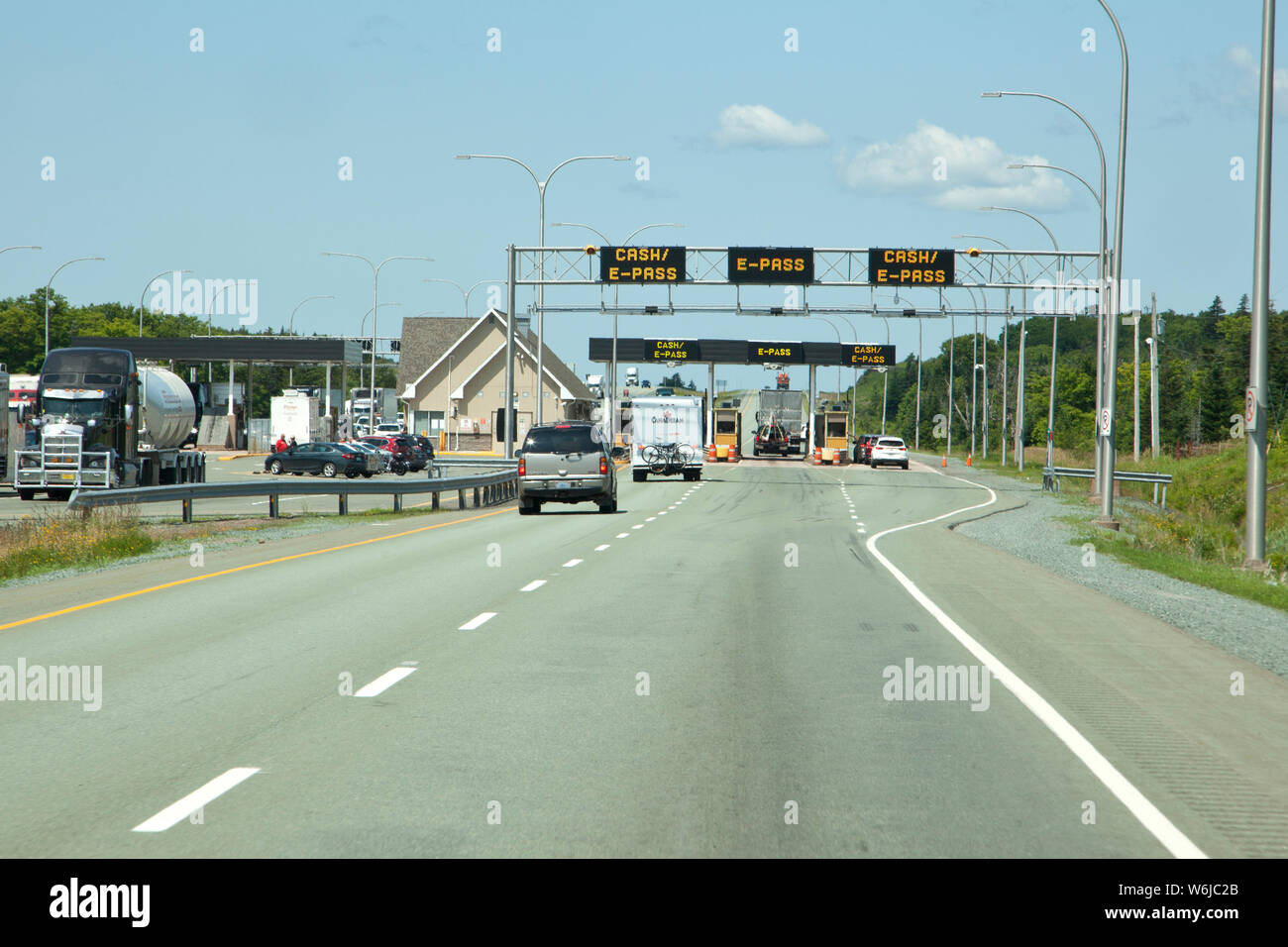Cobequid Pass Camera provides real-time traffic monitoring, significantly enhancing safety and efficiency along this vital transportation route. This system, comprised of strategically placed cameras, offers valuable data on traffic flow, weather conditions, and potential hazards. Understanding the functionality and capabilities of this system is crucial for drivers, transportation planners, and emergency responders alike. The data collected not only aids in immediate traffic management but also contributes to long-term improvements in infrastructure and safety protocols.
The Cobequid Pass camera network offers a multifaceted approach to traffic management. High-resolution cameras capture detailed images, providing real-time updates on traffic density, speed, and any incidents. This information is disseminated through various platforms, allowing drivers to make informed decisions about their routes and travel times. Furthermore, the recorded footage serves as a valuable resource for accident investigations and security purposes, contributing to a safer environment for all users of the Cobequid Pass.
Cobequid Pass Traffic Conditions
Cobequid Pass, a vital transportation artery, experiences fluctuating traffic patterns influenced by various factors. Understanding these patterns is crucial for safe and efficient travel.
Typical Traffic Patterns
Peak hours generally occur during weekday mornings (7:00 AM – 9:00 AM) and evenings (4:00 PM – 6:00 PM), reflecting commuter traffic. Off-peak hours see significantly lighter volumes. Weekends typically experience moderate traffic throughout the day, with potential spikes during popular tourist seasons.
Potential Traffic Delays and Causes

Several factors contribute to traffic delays on Cobequid Pass. Construction projects, accidents, and seasonal weather events are major contributors. Increased tourist traffic during peak seasons can also lead to congestion. Furthermore, unforeseen incidents such as vehicle breakdowns can cause localized slowdowns.
Impact of Weather Conditions
Adverse weather significantly impacts traffic flow. Heavy snow, ice, and fog can reduce visibility and create hazardous driving conditions, leading to reduced speed limits, lane closures, and potential accidents. Strong winds can also pose challenges for larger vehicles.
Weekday vs. Weekend Traffic Volume
| Time of Day | Weekday Volume | Weekend Volume | Notes |
|---|---|---|---|
| Peak Hours (7 AM – 9 AM & 4 PM – 6 PM) | High | Moderate | Significant increase in commuter traffic on weekdays. |
| Off-Peak Hours | Moderate to Low | Low to Moderate | Traffic flow generally smoother during these times. |
| Holidays/Long Weekends | Variable | High | Traffic significantly increases due to increased leisure travel. |
| Overnight | Low | Very Low | Minimal traffic flow. |
Cobequid Pass Camera Locations and Functionality
A network of strategically placed traffic cameras monitors Cobequid Pass, providing real-time traffic data and enhancing safety. Understanding their locations, capabilities, and potential malfunctions is essential for optimal system performance.
Camera Locations
Cameras are strategically located at key points along Cobequid Pass, including major intersections, steep inclines, and areas prone to accidents. Specific locations are not publicly disclosed for security reasons, but a general overview is available from the relevant transportation authority.
The Cobequid Pass camera provides a fascinating real-time view of Nova Scotia’s landscape. It’s interesting to consider the technological challenges involved in such live feeds, especially when compared to the complexities of large-scale drone shows, such as the recent orlando drone show malfunction , which highlights the potential for technical difficulties in coordinating numerous autonomous units. The Cobequid Pass camera, while simpler, still offers a valuable glimpse into the world of remote observation.
Technical Specifications

The cameras are high-resolution, weatherproof units capable of operating in various weather conditions. They employ advanced imaging technology to capture clear images, even in low-light situations. Specific details on resolution and camera type are confidential for security reasons.
Purpose and Intended Use
The primary purpose of the camera system is to monitor traffic flow, detect incidents, and improve overall safety. Data from the cameras is used for traffic management, accident investigation, and law enforcement purposes.
Potential Camera Malfunctions and Causes

- Power outages: Interruption of power supply can render cameras inoperable.
- Network connectivity issues: Problems with internet connectivity can prevent real-time data transmission.
- Hardware failure: Camera malfunctions due to aging equipment or environmental factors.
- Software glitches: Bugs in the camera’s software can disrupt functionality.
- Vandalism: Intentional damage to the camera equipment.
Safety and Security Aspects of Cobequid Pass
The Cobequid Pass camera system plays a vital role in enhancing safety and security. This section details its impact and suggests improvements.
Role of the Camera System in Enhancing Safety and Security
The cameras provide real-time visibility, allowing for rapid response to incidents such as accidents and breakdowns. They also act as a deterrent against illegal activities. Data analysis helps identify accident hotspots, informing targeted safety improvements.
Examples of Camera Footage Use
Camera footage has been instrumental in resolving accidents, identifying reckless drivers, and assisting law enforcement in investigations. Examples include identifying hit-and-run drivers and providing crucial evidence in accident reconstruction.
Effectiveness Compared to Other Safety Measures
While the camera system is a significant safety enhancement, it works in conjunction with other measures like improved road signage, regular maintenance, and emergency services response. The combined effect is far greater than any single element.
Recommendations for Improving Safety and Security
- Increase camera density in accident-prone areas.
- Implement advanced analytics to predict potential hazards.
- Improve lighting in low-visibility zones.
- Enhance emergency response protocols.
User Experience and Accessibility of Cobequid Pass Camera Information
Access to real-time traffic information is critical for drivers. This section examines current methods and proposes improvements for better user experience and accessibility.
Accessing Real-Time Traffic Information
Drivers can typically access real-time traffic information through the relevant transportation authority’s website or mobile application. These platforms usually display live camera feeds and provide traffic updates.
Availability of Camera Feeds
Camera feeds are generally available through the aforementioned website and mobile application. Some third-party navigation apps may also integrate this information.
Comparison of User Experience Across Platforms, Cobequid pass camera
User experiences vary across platforms. Some offer intuitive interfaces and easy navigation, while others may lack clarity or be difficult to use. Accessibility features for users with disabilities may also vary.
Improved Interface Design
An improved interface should prioritize simplicity and accessibility. Large, clear images, intuitive controls, and multilingual support are essential. Features for visually impaired users, such as audio descriptions, should be incorporated.
Environmental Impact and Considerations
The environmental impact of the camera infrastructure and its operation needs careful consideration. This section examines these aspects and suggests mitigation strategies.
Potential Environmental Impact
The primary environmental concerns relate to energy consumption by the cameras and their supporting infrastructure. The manufacturing and disposal of electronic components also contribute to environmental impact.
Measures to Minimize Environmental Footprint
Energy-efficient cameras and power sources are used. Regular maintenance reduces the need for replacements, minimizing waste. Recycling programs are in place for end-of-life equipment.
Comparison with Alternative Traffic Management Solutions
Compared to other solutions like extensive road construction or increased police patrols, the camera system’s environmental impact is relatively low. However, continuous improvement in energy efficiency is crucial.
Plan for Reducing Environmental Impact
- Transition to renewable energy sources for powering the cameras.
- Implement a more robust recycling program for camera components.
- Explore using more energy-efficient camera technologies.
Future Developments and Improvements: Cobequid Pass Camera
Continuous improvement of the Cobequid Pass camera system is vital for enhanced safety and efficiency. This section explores potential future developments.
Potential Future Upgrades
Future upgrades could include implementing AI-powered traffic analysis for predictive modelling of traffic flow, integrating with autonomous vehicle technologies, and upgrading to higher-resolution cameras with improved night vision.
Benefits of Advanced Technologies
AI-powered analysis can predict congestion hotspots and optimize traffic flow, leading to reduced travel times and fuel consumption. Integration with autonomous vehicles can improve safety and efficiency.
Comparison of Different Technologies
Various technologies, including advanced sensor networks and improved communication systems, can be compared based on cost-effectiveness, reliability, and their ability to improve traffic management.
Proposal for Integrating New Technologies
A phased approach is recommended, starting with pilot projects to test new technologies before widespread implementation. This ensures seamless integration and minimizes disruption.
The Cobequid Pass camera provides real-time views of traffic conditions, a valuable resource for drivers. For a different kind of tracking, you might be interested in contacting the norad santa tracker phone number during the holiday season. Returning to the Cobequid Pass, the camera’s feed is regularly updated, ensuring the information remains current and helpful for journey planning.
The Cobequid Pass camera system stands as a testament to the power of technology in enhancing road safety and traffic management. By providing real-time data and contributing to incident resolution, the system significantly improves the overall travel experience. Ongoing developments, such as the integration of AI-powered analytics, promise further enhancements in efficiency and safety. The continued evolution of this system will undoubtedly play a crucial role in ensuring the smooth and safe flow of traffic along the Cobequid Pass for years to come.
Popular Questions
What is the resolution of the Cobequid Pass cameras?
The resolution specifications of the cameras are not publicly available. Information requests should be directed to the relevant transportation authority.
How can I report a malfunctioning camera?
Reporting procedures for malfunctioning cameras are typically found on the website of the agency responsible for maintaining the Cobequid Pass infrastructure. Contact information should be readily available.
Are the camera feeds available 24/7?
The Cobequid Pass camera offers stunning views, especially during winter. For those seeking a different kind of tracking this holiday season, you might consider checking the norad santa tracker phone number for updates on Santa’s journey. Back to the Cobequid Pass camera, its real-time feed provides a captivating glimpse into the changing landscapes.
While the goal is 24/7 availability, occasional outages due to maintenance or unforeseen circumstances may occur. Check the official sources for current status updates.
What types of incidents are typically recorded by the cameras?
The cameras record a wide range of incidents, including accidents, traffic jams, road closures, and unusual weather conditions. The footage aids in incident response and investigation.